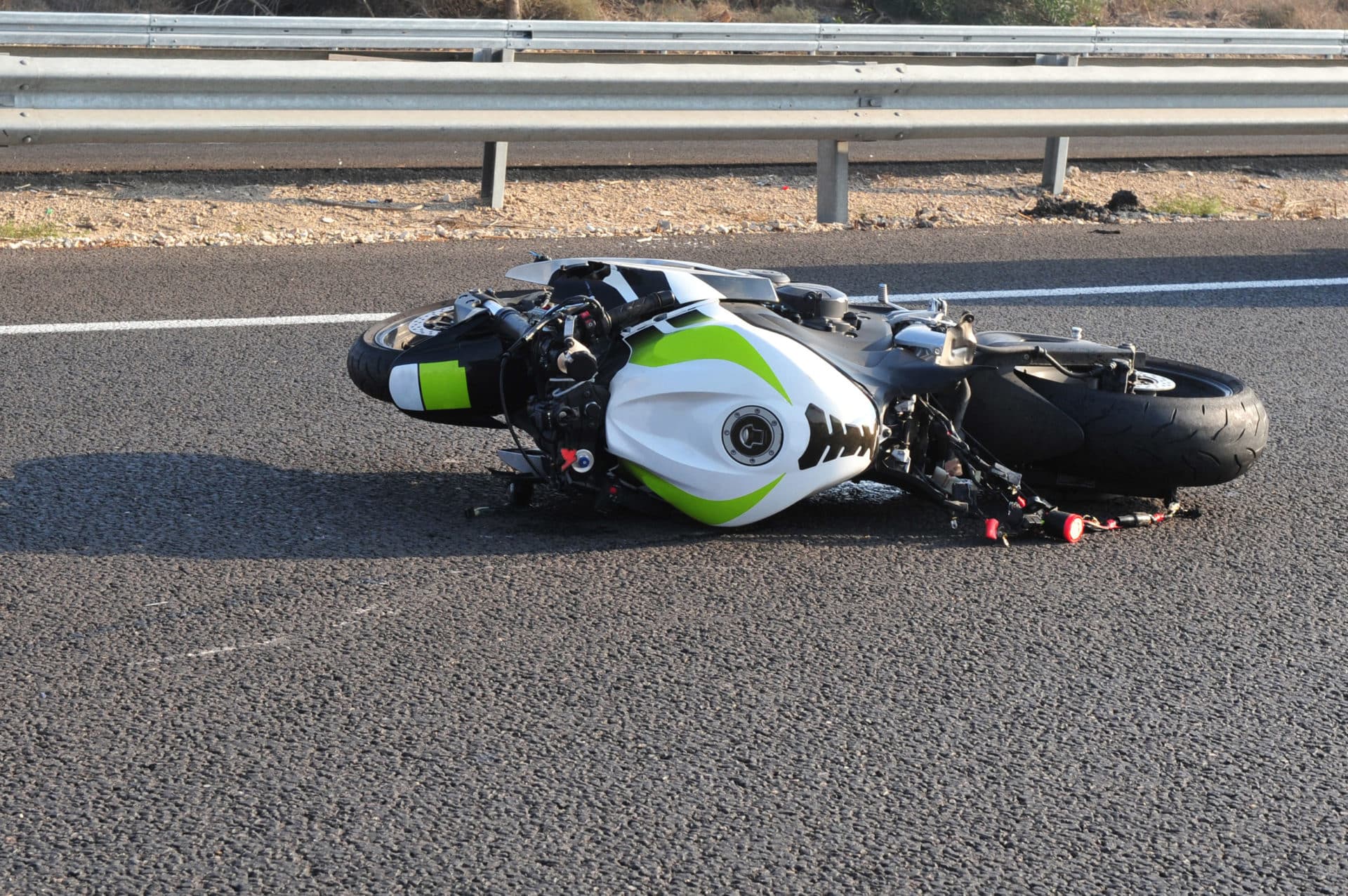Free Consultation
Free Consultation

The best way to avoid motorcycle injuries is not to get into a motorcycle accident, right?
Well, sometimes accidents simply can’t be avoided.
Although your skills as a rider can reduce your chances, as the old adage goes, “it’s not ‘if,’ but ‘when’ you lay down your bike.” Even when the accident is someone else’s fault, you still pay the price.
Fortunately, you can decrease your risk of injury by investing in the right gear. In fact, this is important enough that factoring the price of protective gear into your budget is an absolute must. We’ve got your guide to choosing motorcycle gear right here.
The Importance of Good Gear for New York Riders
The fact is, the human body really isn’t meant to sustain the high-speed impacts associated with motor vehicle crashes. Even motoring around town can bring you to speeds that could prove fatal in an accident.
There’s also the issue of abrasion. “Road rash” is what most call it. Isn’t that cute? If you crash at 70 mph, you’ll lose an inch and a half of flesh. In other words you could sustain serious, life-threatening injuries from road rash alone without good gear.
Luckily, a few extra minutes donning the right protective motorcycle gear can nearly negate the effects of the elements while you’re riding, and can greatly reduce the risk of serious injuries should you crash.
Choosing the right helmet is one of the most important decisions you’ll make in your riding history. Not just any one will do.
Did you know about 45% of all impacts to motorcycle helmets occur around the face, in areas that aren’t covered by open-face or three-quarter helmets? You really do need to be wearing a full-face helmet.
Something else you may not be aware of — motorcycle helmets have only about a five-year life. The impact-absorbing materials break down over time, rendering the helmet less effective. Additionally, replace your helmet after any kind of crash, even when no visible signs of helmet damage are present.
The minimum safety standard is Department of Transportation (DOT) approval, which is required for all motorcycle helmets in the US. However, we suggest “ECE 22.05,” also known as Snell. It’s the European Union standard, and far more rigorous.
The shapes and sizes of helmets also vary widely among manufacturers, and it’s best to try them on at a retailer with professional help to ensure correct fitting.
You absolutely must wear a motorcycle-specific jacket for both safety and comfort. We aren’t talking fashion leather. Those won’t withstand the conditions motorcycle jackets are designed to handle.
High-quality textile materials are able to resist abrasion as well as leather, and are usually waterproof. However, many bikers prefer the look of leather, which is also likely to last longer and fit more closely to the body.
Motorcycle jackets have body armor, impact-absorbing material protecting the vulnerable parts of your body during a crash. In order to be effective, the armor should have a CE safety rating, and protect the elbows, shoulders and back.
Regular jeans won’t protect you from a motorcycle crash, either. Some motorcycle-specific jeans have kevlar panels, but these still don’t offer as much protection as riding pants.
Pants are available in both textile and leather. Regardless of the material, riding pants should be equipped with CE-rated armor in the hips, shins and knees.
They should fit snugly, but still be comfortable and allow you to move your legs freely. Try them on and get on an actual bike to test them out. You could also stand in a riding position to see if the fit feels right.
One area you don’t think about too much — your feet and ankles are extremely vulnerable in a crash, too. It’s important to have motorcycle-specific boots with oil-resistant, non-slip soles.
To see how a pair of boots would hold up in a crash, grasp it by the toe and heel, and twist as hard as you can. If the boot doesn’t look like your foot and ankle would remain intact, they probably won’t.
While good riding boots are typically reinforced with a metal plate that runs through the sole to prevent twisting, better ones have strong heel and toe boxes to help lock your feet in while you’re riding.
Although a hand injury isn’t usually deadly, it can be life-changing. Most of us need the use of our hands for our jobs and everyday activities – including riding. Unfortunately, your hands are often the first thing to touch down in a motorcycle crash.
A good pair of motorcycle gloves should be made of strong, abrasion-resistant materials, and have armor to protect the knuckles and palm. It’s best to have materials that will slide rather than catch on pavement in the event of a crash.
Overall, motorcycle gear is important for both comfort and safety. It’ll protect you from the elements, and provide protection in the event of a motorcycle accident. Make sure that you pick out the right gear, and don’t skimp on quality. In this instance, it’s never more true that you get what you pay for.